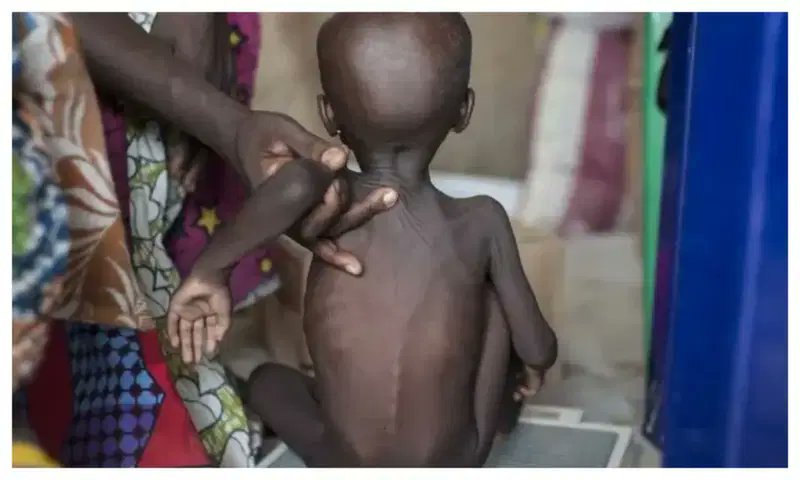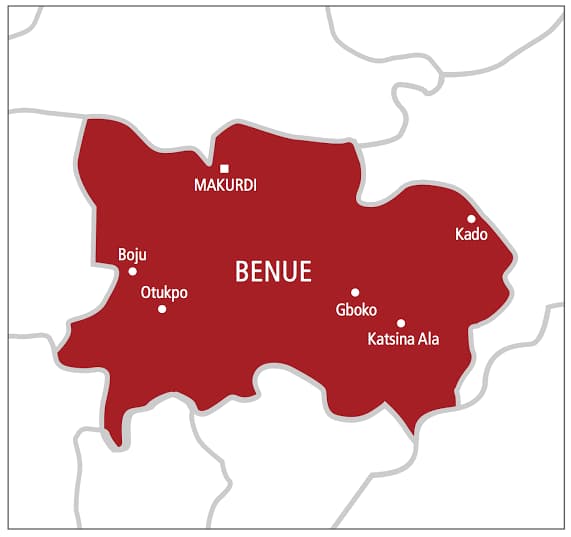Malnutrition remains one of the most pressing public health challenges in Nigeria, particularly for its youngest citizens. According to a recent report by UNICEF, approximately 2.9 million Nigerian children under the age of five are grappling with severe acute malnutrition (SAM), a life-threatening condition that requires urgent intervention. This staggering statistic places Nigeria as the country with the second-highest burden of stunted children globally, highlighting a crisis that demands immediate attention and action. In this blog post, we’ll explore the scope of this crisis, its root causes, its devastating impacts, and the interventions being implemented to address it, while also shedding light on the challenges that lie ahead.
Understanding Severe Acute Malnutrition in Nigeria
Severe acute malnutrition is a condition where children suffer from extreme weight loss, often accompanied by weakened immune systems, making them highly vulnerable to infections and diseases. UNICEF’s data reveals that 2.9 million Nigerian children are affected, with the northern regions of the country bearing the brunt of this crisis. Stunting, a form of chronic malnutrition that results in impaired growth and development, affects millions more, with Nigeria ranking second globally in the number of stunted children.
Malnutrition doesn’t just affect physical growth—it has profound consequences for cognitive development, educational outcomes, and long-term economic productivity. Children who suffer from malnutrition are at a significantly higher risk of mortality, with UNICEF estimating that 45% of deaths among children under five in Nigeria are linked to undernutrition. This is a sobering reminder of the urgent need for comprehensive strategies to tackle this crisis.
Root Causes of Malnutrition in Nigeria
The malnutrition crisis in Nigeria is multifaceted, driven by a complex interplay of socioeconomic, environmental, and cultural factors. UNICEF’s report identifies several key contributors:
-
Poverty: Nigeria is one of the world’s most impoverished nations, with over 40% of its population living below the international poverty line. For many families, access to nutritious food is a luxury they cannot afford. The rising cost of food staples, coupled with economic instability, exacerbates food insecurity, leaving millions of children without adequate nutrition.
-
Conflict and Insecurity: Northern Nigeria, in particular, has been plagued by prolonged conflict, including the Boko Haram insurgency and banditry. These conflicts have displaced millions of families, disrupted agricultural production, and limited access to markets and healthcare facilities. Displaced children are particularly vulnerable, as they often live in camps with limited access to food and clean water.
-
Climate Crises: Climate change has had a devastating impact on Nigeria’s agricultural sector, which many families rely on for their livelihoods. Droughts, floods, and unpredictable weather patterns have reduced crop yields, making it harder for families to grow or afford nutritious food. This is particularly acute in the Sahel region, where environmental degradation has worsened food insecurity.
-
Inadequate Dietary Practices: UNICEF’s report highlights alarming gaps in infant and young child feeding practices. Only 17% of Nigerian infants are exclusively breastfed for the first six months of life, despite breastfeeding being a critical source of nutrition for newborns. Additionally, just 18% of children aged 6-23 months receive a minimum acceptable diet, which includes a diverse range of foods necessary for healthy growth. Cultural beliefs, lack of awareness, and limited access to nutritious foods contribute to these low rates.
-
Healthcare and Sanitation Challenges: Malnutrition is closely linked to poor access to healthcare and sanitation. Many Nigerian children suffer from preventable diseases like diarrhea, which exacerbate malnutrition by reducing the body’s ability to absorb nutrients. Limited access to clean water and sanitation facilities further compounds the problem, particularly in rural areas.
The Devastating Impacts of Malnutrition
The consequences of malnutrition extend far beyond childhood. Children who suffer from severe acute malnutrition are at a significantly higher risk of death from common illnesses like pneumonia and diarrhea due to weakened immune systems. Those who survive often face lifelong challenges, including:
-
Stunted Growth and Development: Chronic malnutrition leads to stunting, which impairs physical growth and cognitive development. Stunted children are more likely to struggle academically and face reduced earning potential as adults, perpetuating the cycle of poverty.
-
Increased Disease Vulnerability: Malnourished children are more susceptible to infections and have lower resistance to diseases, which can lead to frequent illnesses and prolonged recovery times.
-
Economic and Social Costs: Malnutrition has far-reaching economic implications. A malnourished population is less productive, which hinders economic growth and development. The healthcare costs associated with treating malnutrition-related illnesses also place a significant burden on Nigeria’s already strained healthcare system.
-
Intergenerational Effects: Malnutrition can perpetuate a vicious cycle across generations. Malnourished mothers are more likely to give birth to low-birth-weight babies, who are at higher risk of malnutrition themselves, continuing the cycle of poor health and poverty.
UNICEF’s Response
Despite the scale of the crisis, there is hope. UNICEF has been at the forefront of efforts to combat malnutrition in Nigeria through its Community-based Management of Acute Malnutrition (CMAM) program. Since its inception in 2009, the CMAM program has treated over two million children with severe acute malnutrition, providing them with life-saving interventions.
The CMAM approach focuses on early detection and treatment of malnutrition at the community level, reducing the need for costly and resource-intensive hospital-based care. Key components of the program include:
-
Screening and Diagnosis: Community health workers are trained to identify children with severe acute malnutrition using simple tools like mid-upper arm circumference (MUAC) tapes. Early detection is critical to ensuring timely treatment.
-
Ready-to-Use Therapeutic Food (RUTF): RUTF is a high-energy, nutrient-dense food that can be administered at home, making it a game-changer for treating malnutrition in resource-poor settings. RUTF has been instrumental in saving lives, as it allows children to recover without needing prolonged hospital stays.
-
Community Engagement: The CMAM program involves local communities in the fight against malnutrition by training caregivers and raising awareness about proper nutrition and feeding practices. This community-driven approach ensures sustainability and empowers families to take charge of their children’s health.
-
Integration with Other Services: UNICEF integrates malnutrition treatment with other health interventions, such as vaccinations, deworming, and maternal health programs, to address the broader determinants of child health.
Challenges and the Road Ahead
While the CMAM program has achieved remarkable success, significant challenges remain. UNICEF estimates that $165 million is needed to sustain the supply of RUTF and scale up treatment efforts across Nigeria. However, funding shortages threaten to undermine these efforts, leaving millions of children at risk.
Additionally, addressing the root causes of malnutrition requires long-term, multisectoral solutions. Improving agricultural productivity, ensuring food security, and expanding access to clean water and sanitation are critical steps toward reducing malnutrition. Investments in education and awareness campaigns can also help shift cultural practices around infant feeding, ensuring that more children receive the nutrition they need in their critical early years.
The Nigerian government, in collaboration with international partners like UNICEF, must prioritize malnutrition as a national emergency. Policies that address poverty, conflict, and climate change will be essential to creating an environment where children can thrive. Furthermore, increased funding for health and nutrition programs, both from domestic and international sources, is crucial to closing the gap in treatment coverage.
How You Can Help
The malnutrition crisis in Nigeria may seem overwhelming, but every action counts. Here are some ways you can contribute:
-
Donate to UNICEF or Other NGOs: Contributions to organizations like UNICEF directly support life-saving programs like CMAM. Even small donations can help provide RUTF to children in need.
-
Raise Awareness: Share information about Nigeria’s malnutrition crisis on social media or within your community to draw attention to this urgent issue.
-
Advocate for Policy Change: Support policies that address poverty, food insecurity, and healthcare access in Nigeria. Engage with local and international leaders to prioritize child nutrition.
-
Support Local Initiatives: Partner with or donate to local organizations in Nigeria working to improve nutrition and health outcomes for children.
Conclusion
The revelation that 2.9 million Nigerian children suffer from severe acute malnutrition is a call to action for all of us. This crisis, driven by poverty, conflict, climate change, and inadequate dietary practices, threatens the lives and futures of millions of children. While UNICEF’s efforts through the CMAM program have saved countless lives, the scale of the challenge requires sustained commitment, funding, and collaboration.
By addressing the root causes of malnutrition and scaling up proven interventions, we can give Nigeria’s children the chance to grow, thrive, and reach their full potential. Let’s stand together to ensure that no child in Nigeria goes hungry or suffers the devastating consequences of malnutrition. The time to act is now.
Join our Whatsapp channel to stay updated always!


